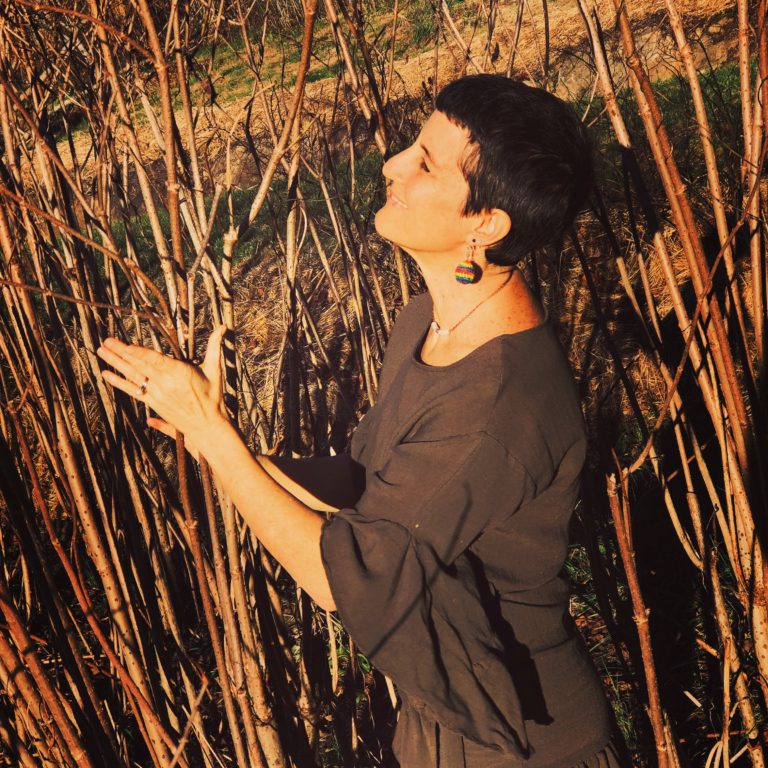Imbolc and Elderberry
Blessed Imbolc dears! I thought I would share one of my Imbolc rituals with you of tending to Elder (Sambucus canadensis) and then wax on a bit about this Adoxaceae family member while I’m at it. For those of you who do not know about Imbolc, it is one of the cross-quarter holydays of the wheel of the year festivals that honors the cycles of nature and the seasons’ turnings. Imbolc is a derivative of old Irish, meaning ‘in the belly,’ and referred to the pregnancy of their beloved ewes thus symbolizing the season changing into spring. Ewe’s giving birth brought fresh milk, which was quite a celebration when you had no grocery stores nearby. The first milking was offered to the thawing ground in preparation for planting seeds. Extra candles were burned in the home to lure back the sun. I celebrate it like my Celtic ancestors when both the sun and dark moon are in Aquarius, although it is on the Gregorian calendar as February 1st. This year, lunar Imbolc is today, January 21st, which is also Chinese New Year!
What this means on a practical level, from here on until it’s obvious, is that the plant world is stirring. They haven’t gotten out of bed yet, but they are rousing. Seeds stretch inside their seedcoats; root crowns begin to swell; sap invariably starts to rise—the green world is slowly awakening and if you want to prune things before they have started putting their life force back into their aerial parts, this is a really good time on the wheel of the year to do it.
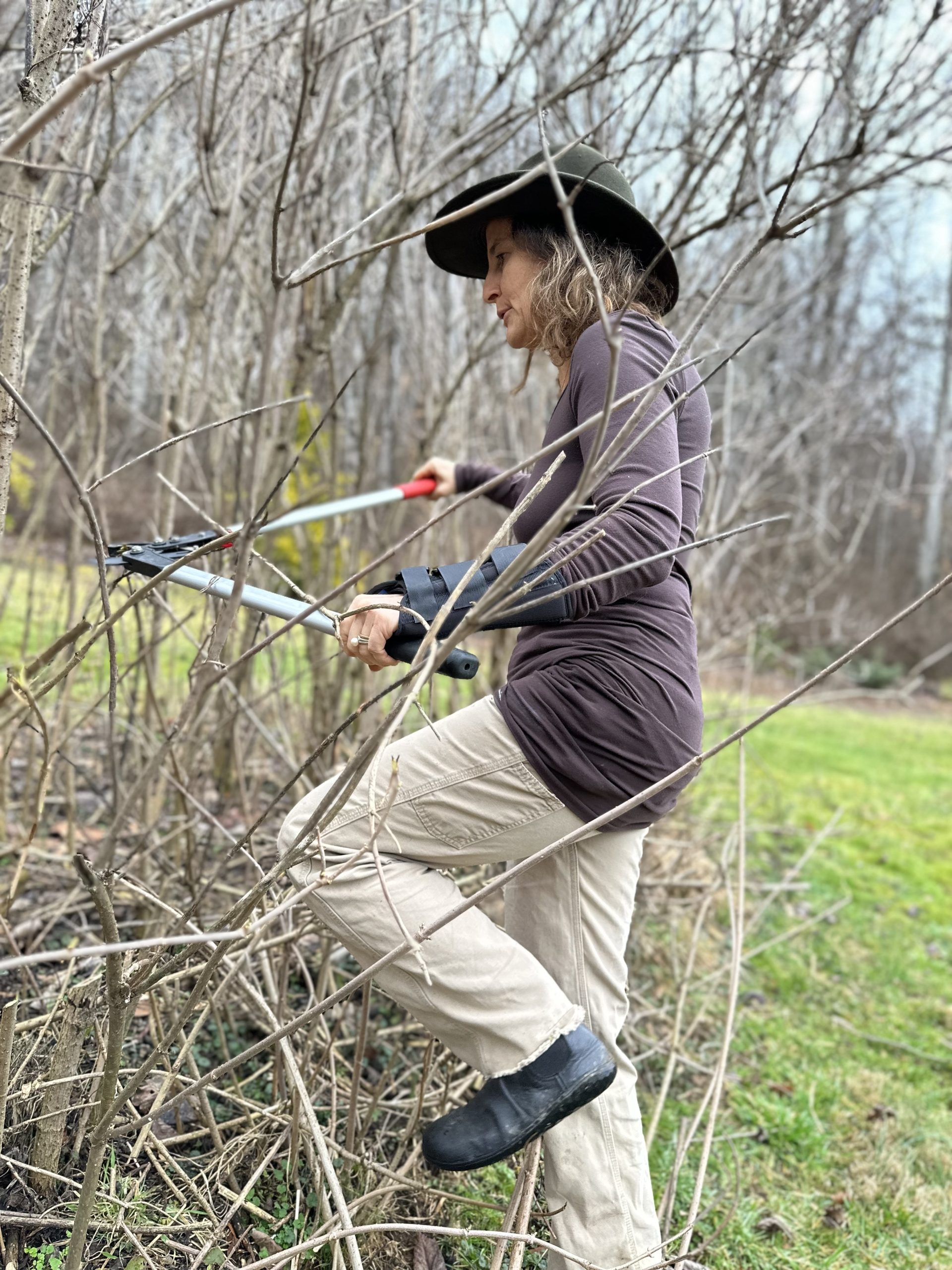
Pruning back the Elder patch in winter
If you have tended an Elder plant, or a grove of them, then you know how much dead wood they can produce in one year. The shrub is a long-lived perennial, but the branches die back regularly. They remind me of a head of hair- dead hairs fall out every day yet the hair keeps growing and you never really can tell you are losing any (unless you are going bald or are sick or are menopausal etc…) If you push on an Elder shrub, invariably one or some branches crack and fall to the ground. It doesn’t mean your Elder plants are unhealthy or dying, it is just part of its natural habit.
However, if these stands of Elder are not thinned or pruned, then over time, they become full of dead wood which leads to lesser air flow, less light and less room for new growth. This means less flowers which also means less fruit. And probably you are growing these Elder shrubs for their fruit, yes? So once every three years or so, it will strengthen the vigor of your patch to give them a heavy pruning back to one or two feet from the ground. They will grow back and fruit in just one season!
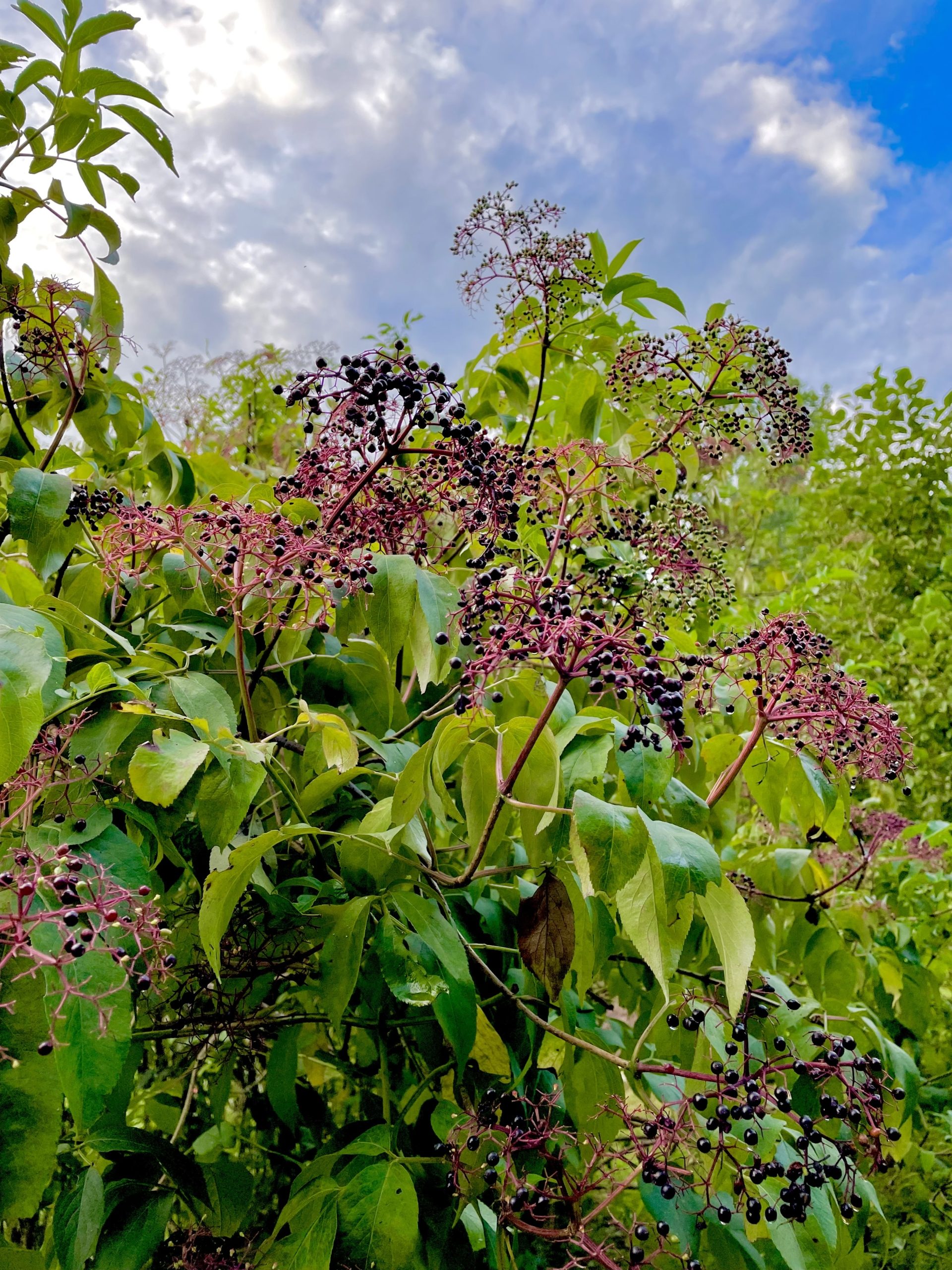
Sharing the fruits of this happy Elder grove with the birds:-)
The Mother Elders, the ones you or someone planted originally, will become stockier and you cannot cut them back very easily. In Sicily, the Elders were small trees, 30 feet tall! But you can cut out the dead limbs that are attached to the older trunks. You will receive beautiful new growth and abundant fruit from this tending. You can even feed your Elders compost at this time if you’d like, although they are not dependent on that fertilizer, like, say, strawberries or apples or other fruits we partake. Elders love some dampness. They can thrive in a variety of pH soils as long as there is plenty of sunlight. Like Doug Elliott says, “they just eat dirt and drink light.”
So right now if you go out and look at Elderberry, well, for one, there is no berry which is why I prefer to call it Elder instead, you will see bare, grayish brown, warty branches with leaf buds opposite one another on up the stem. They don’t look like much this time of year. I find it utterly amazing that the large pinnate leaf and big cream-cluster of a flower is already inside of that stem, just waiting for the right timing to unfurl is absolutely gorgeous self. Especially since that stem is so pithy. Kids have been hollowing out that soft pith and making whistles out of Elder branches for centuries. In fact, the botanical name comes from the Greek word sambuce, which means ‘wind instrument.’
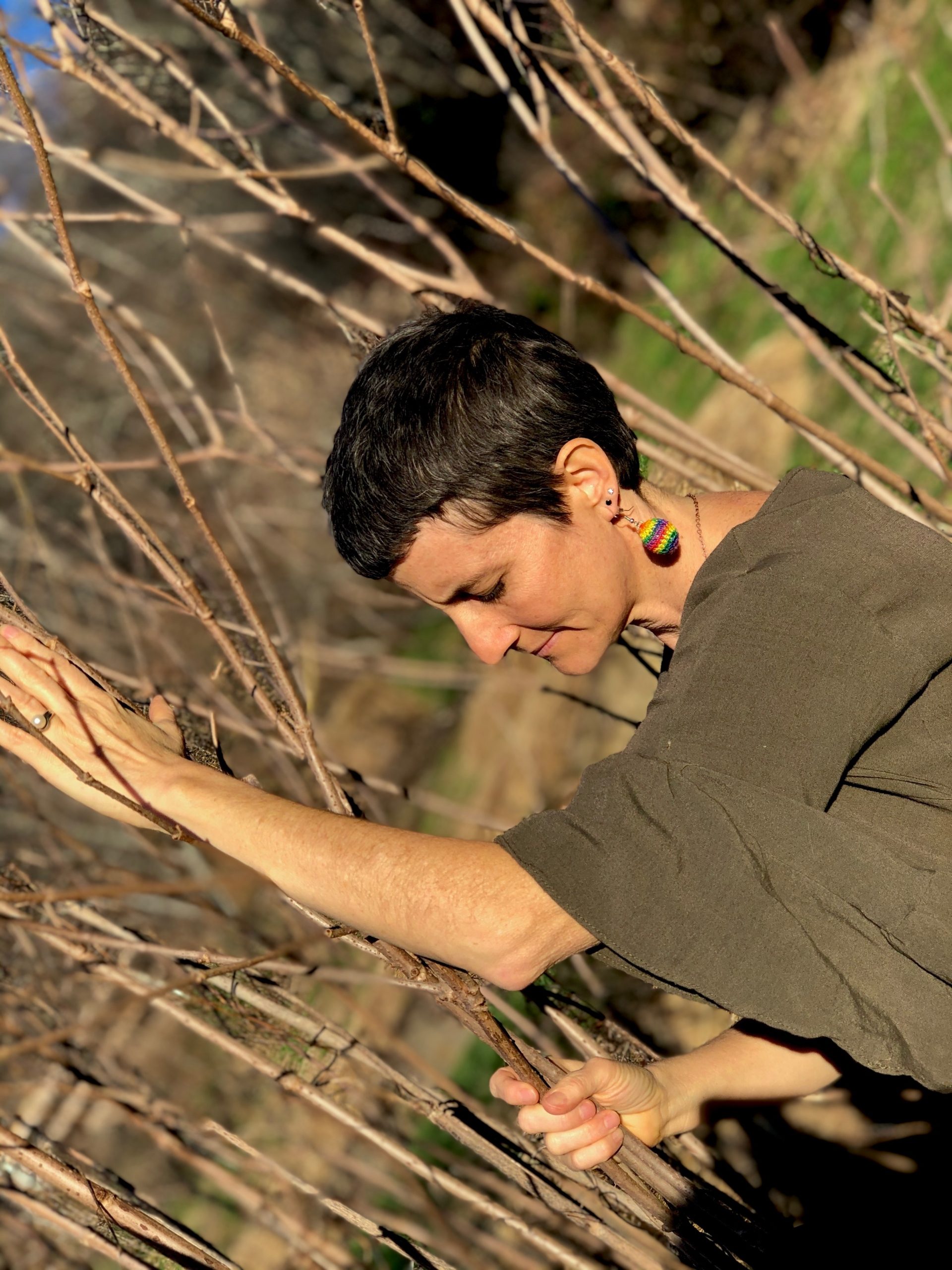
Mary Plantwalker awing over Elder’s potential hiding inside the stem, 2019
There are over two dozen species of Elders, and some combine the canadensis and nigra species together. I am not fully sure which Sambucus species I grow. Either way, both are interchangeable medicinally. But please do note that all parts of the plant are poisonous when raw. They contain cyanogenic glycosides that are removed with heat or drying. The plants are served well by these cyanogenic glycosides as they act as a transport for carbon and nitrogen and help form the leaf buds, among other things we have no idea the cyanide is doing, I am sure.
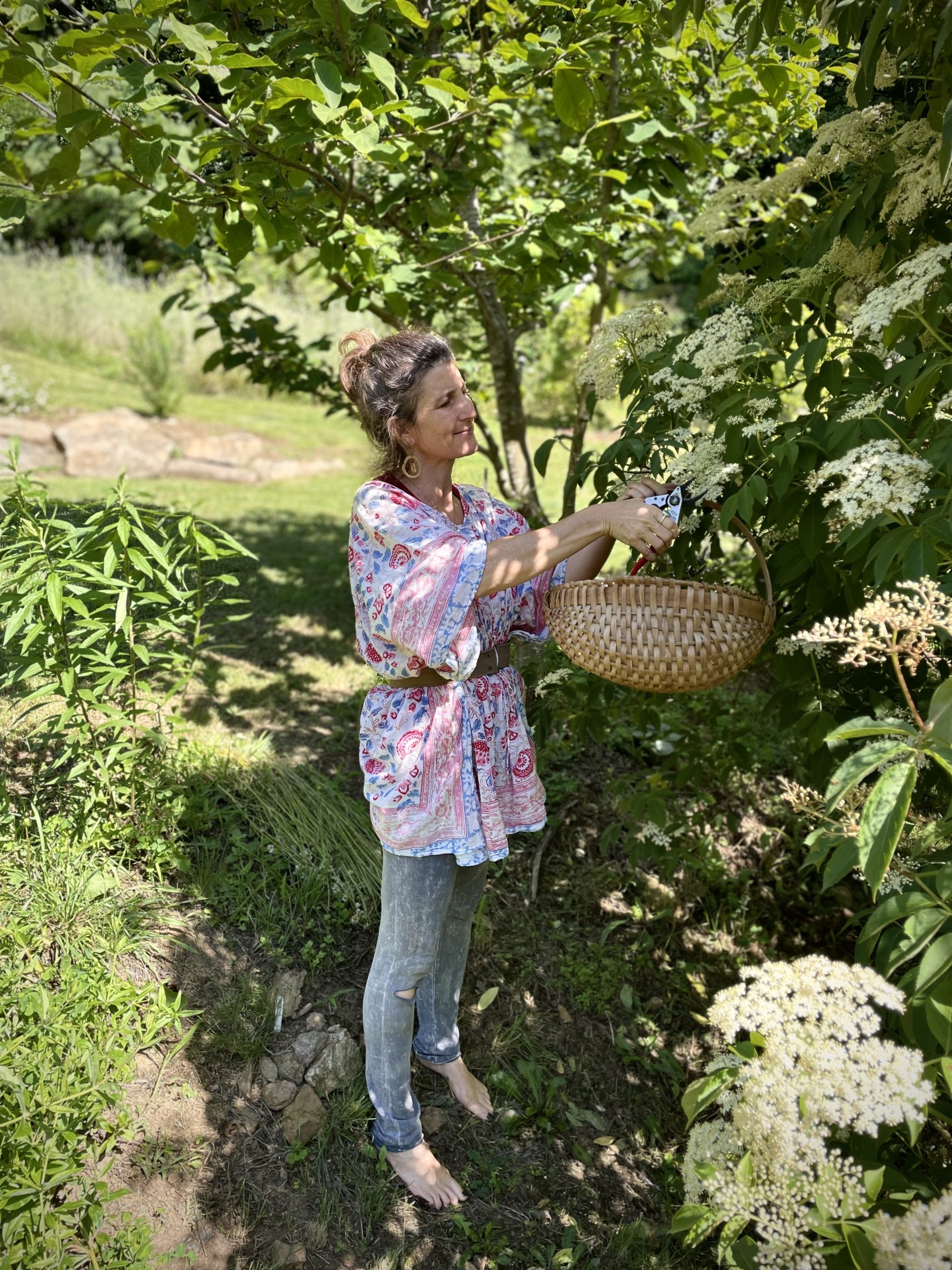
Harvesting Elderflowers to make cordial
I have made Elderberry syrup, mead, dried the berries for tea and made Elderflower cordial. I even found a recipe for peppermint- elderberry cookies that was delicious! Writing this little piece has given me an idea- I would like to make Elderflower cordial this year and then drink it ritually on Imbolc. And since I don’t have an ewe to give her milk to the land as an offering for the growing season to come, I can offer some of this Elderflower cordial as prayers for a good growing season. I will keep you posted about it! Cheers!

